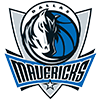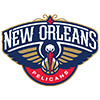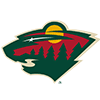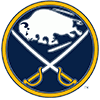Over the course of reading this column, not to mention hockey writing in general, you'll encounter a lot of talk about what we like to term "NHL readiness" – as in, "Ryan Murray was the most NHL-ready defenseman in the 2012 draft." But that readiness can be an elusive concept, and one that isn't always represented in the stats.
So what makes a player NHL-ready? To an extent, the answer to that question varies by organization; some put more value on certain aspects of the game than others. Typically, it's defined by a coaching style – NHL readiness is whatever the coach says it is. If all he cares about is that you put the puck in the net, and you're putting the puck in the net, you're NHL-ready to him. But that's a relatively rare mindset. In today's league, there's more emphasis than ever on physicality and hard work, while raw tools – size, hands, a hard shot and so on – are only as good as the skills that accompany them.
Naturally, NHL readiness is defined in part by position.
For a defenseman, mastery of the offensive side of the game isn't one of the most important considerations unless you're a generational offensive talent. More commonly, as any NHL observer knows, most defensemen make a minimal offensive impact upon entering the league, but can develop more scoring ability over time as they learn to jump into the play without hanging their goalies out to dry.
Forwards can
Over the course of reading this column, not to mention hockey writing in general, you'll encounter a lot of talk about what we like to term "NHL readiness" – as in, "Ryan Murray was the most NHL-ready defenseman in the 2012 draft." But that readiness can be an elusive concept, and one that isn't always represented in the stats.
So what makes a player NHL-ready? To an extent, the answer to that question varies by organization; some put more value on certain aspects of the game than others. Typically, it's defined by a coaching style – NHL readiness is whatever the coach says it is. If all he cares about is that you put the puck in the net, and you're putting the puck in the net, you're NHL-ready to him. But that's a relatively rare mindset. In today's league, there's more emphasis than ever on physicality and hard work, while raw tools – size, hands, a hard shot and so on – are only as good as the skills that accompany them.
Naturally, NHL readiness is defined in part by position.
For a defenseman, mastery of the offensive side of the game isn't one of the most important considerations unless you're a generational offensive talent. More commonly, as any NHL observer knows, most defensemen make a minimal offensive impact upon entering the league, but can develop more scoring ability over time as they learn to jump into the play without hanging their goalies out to dry.
Forwards can take a number of different paths. Some never flash a ton of offensive talent in the minors or in juniors, but they can develop as depth-line grinders and penalty killers at the NHL level and gradually develop skill sets that play on the offensive end; the Devils' David Clarkson is a great example. Others light up the scoreboards in the minors, but their organizations won't commit to them until they play the game "the right way."
So what's the right way?
For skaters in general, coaches look for the strength and the willingness to go into the corners and grind along the wall to win puck battles. This is equally important on both ends of the ice, and a lot of teams won't let you see many shifts if you're not strong enough on the puck, no matter how many moves you can pull on open ice.
Just as crucial: making smart plays with and without (but especially with) the puck. Often, high-talent young players face difficult adjustment periods in the NHL, where everyone is bigger and faster than they were in the minors. In the AHL, you often have only a fraction of a second to make a decision with the puck; in the NHL, you have a fraction of a fraction. Recognizing what the other team's trying to do, avoiding turnovers and finding the gaps in tightly checked games can be the difference between winning and losing, and players who habitually make bad decisions at game speed either kick the habit or find another league to play in.
The third often-crucial aspect of NHL readiness is physicality. While some teams put more emphasis on this than others, making (smart) physical plays is necessary at the highest level of hockey. Whether that means making hits or taking hits to make plays, coaches demand the willingness to sacrifice your body for the team. Of course, there are plenty of smaller players flourishing in today's game. They have to learn a slightly different skill to survive – how to avoid hits while still making plays.
What about the goalies, you ask? Well, it's all about focus and mental toughness. And stats. Stats help.
Called Up
Radko Gudas, D, TB – Gudas will get into his first NHL game Tuesday night against Florida, and it's a good bet that he'll find an opportunity to mix things up, considering the impressive 207 PIM he's managed to compile in 57 games for AHL Syracuse this year. Adding to the intrigue, the 22-year-old has managed 20 points and a team-leading plus-32 from the blue line, adding up to his best offensive campaign in three AHL seasons. It's hard to say whether Gudas will stick with the Bolts for long, but the 2010 third-rounder's combination of physicality, defensive responsibility and occasional offensive contributions make him an instant shot in the arm for deep-league players in search of hits and penalty minutes.
Alex Stalock, G, SJ – It's been a long road, but Stalock finally got into his second career NHL game Saturday, relieving Antti Niemi and saving six of seven shots. The 2005 fourth-rounder has overcome a skate cut that severed a nerve in his leg, an injury that required surgery and forced him to miss nearly a season and a half. This will be a relatively short stay while Thomas Greiss (neck) is sidelined, but Stalock could quite reasonably see a start or two before returning to AHL Worcester, where he's been typically effective, posting a .917 save mark.
Chris Terry, C, CAR – After toiling away for the Hurricanes' AHL affiliates the last three-plus years, Terry finally got into his first NHL game on Saturday, and he responded with the game-winning goal. The 23-year-old (he'll be 24 in April) is no stranger to scoring, having compiled 169 points in the AHL over the last three seasons. He leads Charlotte in scoring this year with 46 points in 55 games, he led the Checkers last year as well, and he finished one point behind Zach Boychuk the year before. The length of the 2007 fifth-rounder's stay in Raleigh will be determined by how much he's improved his skating ability and whether he's developed NHL-level physicality.
Jake Allen, G, STL – Allen has become the third piece of the Blues' netminding puzzle, as he was recalled despite Brian Elliott and Jaroslav Halak being totally healthy, if ineffective. While he didn't post great stats in his two starts last week, allowing three goals on less than 30 shots in each, he did win both, and the 22-year-old is slated to start again on Tuesday. It's been a down season for him with AHL Peoria, with just a .904 save mark, but to be fair, Peoria has been even worse this year than the disappointing St. Louis squad that's in front of him now.
Steve Oleksy, D, WAS – I saw Oleksy's name on the transaction sheet as I was writing last week's column, but I ignored him; at 27 years old, with just 14 points in 55 AHL games, but a nice pile of PIM, there didn't seem to be much to write home about. And now here we are – the Michigan native, a career minor leaguer who went undrafted out of Lake Superior State University, has four points, a plus-3 rating and 11 hits in his first four NHL games, including his first NHL goal Sunday against the Rangers. Oh, and he's picked up just two penalty minutes. It's hard to explain and tempting to write off as the vagaries of small sample sizes – and that's exactly what I'm going to do. For now.
Peter Holland, C, ANA – A regular in this space this year, Holland's skated in three games since being recalled, seeing ever-increasing ice time (nine minutes, then 11, then 14), but failing to respond with any scoring. We know that ability's there, as evidenced by the 22-year-old's 38 points in 42 games for AHL Norfolk this year and 60-point AHL season last year. The positive is that the increasing ice time points to the Ducks seeing something they like in their 2009 first-round pick.
Gustav Nyquist, C, DET – Seemingly never affected by the jerking around that's ruined so many other prospects, Nyquist has maintained his steady AHL point production between recalls, piling up an impressive 23 goals and 60 points in 57 games for Grand Rapids this season, his second straight year of point-per-game production in the minors. The former University of Maine standout and 2008 fourth-rounder will get another shot to stick with the Wings thanks to the send-down of Tomas Tatar (below).
Sent Down
Tomas Tatar, LW, DET – The unfortunate soul who had to go to make room for Nyquist, Tatar had seen a sizeable decrease in ice time over his last five games, from about 12 minutes a game to 10. Unsurprisingly, he hadn't found the scoreboard since March 3. He'll head back to Grand Rapids, where he's impressed with 39 points in 44 games this season. His numbers as a Wing aren't too bad, either, for a 22-year-old getting his first extended NHL action, as he's totaled seven points and a plus-2 in 18 games. Plenty of promise for the future here.
Mikael Granlund, C, MIN – Granlund had been seeing a lot of scratches lately – four in the last eight games – and so the Wild elected to send him down to AHL Houston to get more playing time. The ninth overall pick in 2010, Granlund's been productive in the minors this year – 21 points in as many games – and was a force to be reckoned with in the Finnish league over the last three seasons. Despite decent ice time for Minnesota (almost 14 minutes of total ice and 2:10 on the power play per game), he's struggled to score, putting just 23 shots on goal over 19 games. He isn't much of a contributor on defense (minus-3 for a first-place team) and has won just under 50 percent of his faceoffs, so there wasn't anything forcing the Wild to keep him in the lineup. At just 21 years old, he's better left with Houston to continue to develop a well-rounded game. Some added muscle would help.
David Rundblad, D, PHO – What's this? David Rundblad? Sent down? Well, I never. After being scratched for five straight games, Rundblad was banished back to AHL Portland, where he's occasionally played when not sitting in the Phoenix press box. The 22-year-old former first-rounder's got a goal in two games since returning to the minors and a still-pretty total of 26 points in 36 AHL games this year.
Jordan Schroeder, C, VAN – After a 13-game goalless streak and eight straight without a point, the Canucks finally shipped Schroeder back to the minors, where the 22-year-old needs to continue working on finding consistency in the offensive end. Picked in the first round by Vancouver in 2009, Schroeder's failed to live up to the offensive promise he once showed at the University of Minnesota. He had his best year in the minors last season – 44 points in 76 games – and has failed to develop this year, totaling 19 points in 30 games for AHL Chicago and just five in 22 games with the big team.
Sven Baertschi, LW, CGY – Baertschi had what could have been a breakout season derailed by injury and a lack of development, so the Flames sent their 20-year-old phenom down to the AHL to get right. Don't forget, this is a kid who averaged two points per game for Portland of the WHL last year and piled up 34 points in 22 playoff games. The young Swede's got serious, serious offensive skills, and when he puts it all together, he's going to be dangerous.
Stefan Elliott, D, COL – The 22-year-old and 2009 second-round pick had been having a hard time cracking the Colorado lineup, so the Avs returned him to the minors to gain more experience. Elliott showed big-time offensive skills in juniors, scoring 57 goals and 146 points from the blue line over his final two seasons, and totaled 27 points over 69 games split between the NHL and AHL last year, but his development has taken a step back this season. He has only eight points in 37 AHL contests and has gone scoreless in all five for Colorado.
The Future to Come
This week's prospect is Nick Cousins, a center for the OHL's Sault Ste. Marie Greyhounds and a third-round pick by the Flyers in 2011. On Friday, Cousins became the third OHLer to 100 points this year. A gifted playmaker, he's second in the circuit in assists with a whopping 75 (to go with 26 goals) in 61 games for the Greyhounds this season – an improvement he chalks up to good coaching and a renewed focus on solid defensive play.
The subject of a fairly controversial (thanks to Ian Laperriere's ridiculous quote) Philadelphia Daily News article last month, Cousins has pending legal trouble stemming from a sexual assault charge, so clearly his decision-making off the ice needs work. That said, many players in all sports have made horrible choices that they had to pay for in their youth, and that hasn't stopped a lot of them from going on to be successful. Without moralizing too much, I'll say that while it's got to be great as a prominent player in Canadian juniors, it also can breed unhealthy attitudes about self-importance and the treatment of women. The important thing is that Cousins pays the price, learns his lesson and grows up.
Back to hockey talk.
At 19 years old, Cousins is in the unusual position of being in his fourth full junior season, meaning he could return for a potential second consecutive 100-point campaign next year, though it seems possible he could turn pro as well. He's known as much for his mouth as his skating and passing skills, and agitation is always a skill that's in demand in the NHL – especially for a team like the Flyers that loves to get under opponents' skin.
If you have any players you'd like me to discuss in next week's column, please direct all inquiries here, or feel free to discuss them in the comments.


































